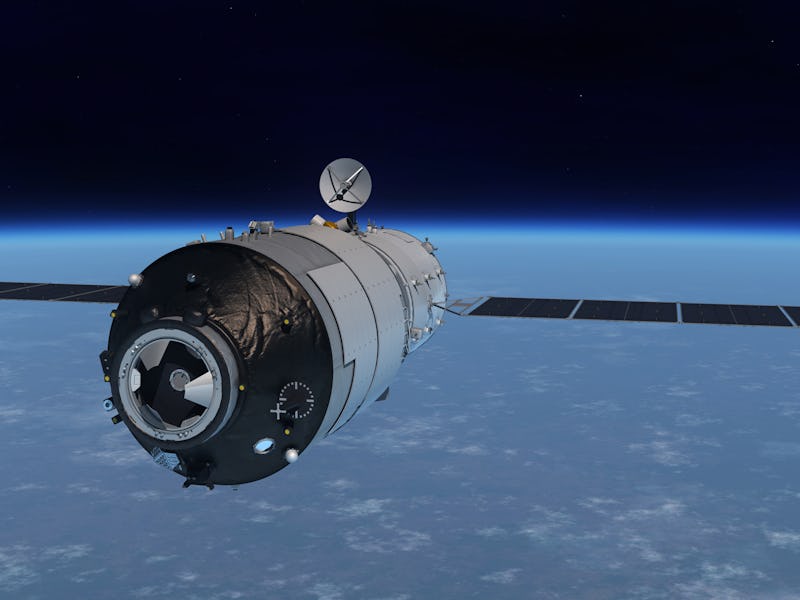Tiangong-1 Falls to Earth, Meets a Fiery Death Near ‘Spacecraft Cemetery’

On April 1 at approximately 8:16 p.m. Eastern, China’s Tiangong-1 space station met its imminent demise when it reentered Earth’s atmosphere as 19,000 pounds of smoldering metal and plastic. The once state-of-the-art spacecraft, that’s name translates to “Heavenly Palace,” went from a castle in the sky to hunks of shrapnel floating in the Pacific Ocean.
The United States Strategic Command’s Joint Force Space Component Command confirmed on Sunday that Tiangong-1 had taken its last lap around the Earth and dove into its watery grave. This concluded the orbiter’s saga, which drew the attention of space enthusiasts and aerospace professionals around the globe.
Join our private Dope Space Pics group on Facebook for more strange wonder.
Organizations tracking the failing space lab weren’t quite sure where it would end up until it actually began its descent. Tiangong-1 made a splash just north of what is known as the “spacecraft cemetery” in the Pacific.
This swath of ocean is located 2,400 miles (3,900 kilometers) southeast of New Zealand where a few other spacecraft, including the Mir space station, have been deposited. This remote region is a part of the “Point Nemo” oceanic pole of inaccessibility, the area of sea furthest from land. So paying respect to Tiangong-1 in person is pretty much impossible.
The satellite went rouge two years ago when the Chinese government lost contact with it and it has since been on a decaying orbit, destined to plummet back whence it came.
Its uncontrolled never posed a threat to any of us down here on Earth. Over 70 percent of the Earth’s surface is covered in water, so the odds of it falling in the middle of the ocean were always pretty high. It’s also estimated that the chances of getting hit by space debris are about 70 trillion to one, making it almost certain that Tiangong-1 wasn’t going to land on your roof.
There’s always next time though.